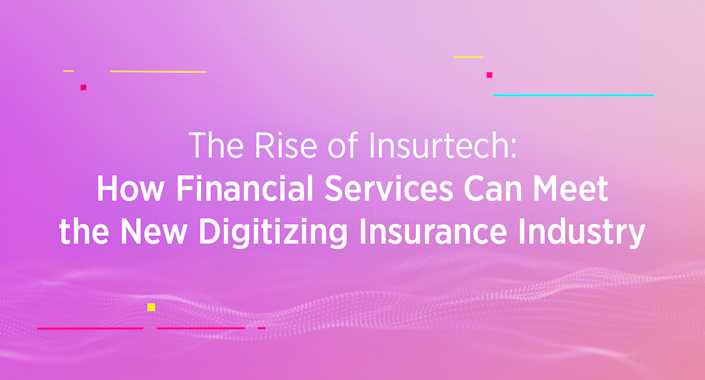The Rise of Insurtech: How Financial Services Can Meet the New Digitizing Insurance Industry

The insurance industry began in 1600s London, where ship merchants sought insurance in coffee houses such as Edward Lloyd’s (now Lloyd’s of London) before venturing out on long global voyages. Today, innovation in the industry still seems to be found over coffee- now, a flat white in a WeWork rented by tech wizards looking to shake things up at a start-up.
With ‘insurtech’ becoming the next digital disruptor in financial services, legacy brands are now waking up to smell the coffee. According to Accenture, 76% of insurance executives say the stakes for innovation have never been higher, as major changes such as the global pandemic are forcing insurers to abandon the status quo and meet changing digital expectations from customers.
For those looking to get ahead, here are three key trends brewing across the insurance industry that will help brands meet ever-evolving customer needs.
Plans to Invest in (More) Fintech Partnerships
Insurance companies are not immune to the fintech revolution, but few are taking action to put technology at the heart of their strategy. Currently, three in four insurance companies believe that some part of their business is at risk of disruption, but almost a third of insurers do not deal with fintech at all.
While change can seem intimidating, with over a third of traditional operations lost to fintech, insurance companies need to act quickly and jump on the bandwagon. Savvy new technology-led insurance companies are quickly entering the market with an upper hand in connecting with a growing digital customer base, without all of the strings that come attached to legacy CRM and data platforms at more established insurance brands. According to Mckinsey, insurtechs are still in their early adoption phase but quickly impact the market with new technologies and approaches.
These more nimble organizations bring a host of new tricks, including product innovation, robo-advisory, and blockchain. Legacy insurance brands can create a win-win through partnerships, collaboration, or even acquisitions with new and emerging insurtechs.
But speed is a must - even the insurtechs are on the acquisition path, as we saw last month with six-year-old Lemonade's acquisition of Metromile (one of the largest usage-based insurers globally).
Personalized Usage-Based Models Are Accelerating
The gig and sharing economies will likely go down in the history books as the shift in how we organize our societies. And while the likes of Airbnb and Uber can take a lot of the credit for that, it’s the ripple effect of more flexibility in the way we consume and spend our time that will make its mark.
Consumers are using cars less, renting property differently, and diversifying their ‘job portfolio’– all of these moments impact financial services, including insurance. Usage-based insurance models are becoming the new standard across the industry. These targeted concepts provide customers with inexpensive product offerings based on their specific needs or create a valuable add-on to their existing service. As new customer expectations continue to skyrocket, insurers have the opportunity to invest in next-generation capabilities such as subscription models and hyper-personalized experiences. In the UK, EY found that 69% of drivers now prefer usage-based automotive policies, and the industry is starting to jump on that trend. For example, this year, Ford teamed up with technology partner ByMiles to offer pay-per-mile insurance, which is even more in-demand as the pandemic dictates a reduced necessity to commute.
We can also observe more flexibility coming into play across the rental sector. For example, Canadian tech brand Duuo aims to support short-term rental hosts to “protect your home, one night at a time.” Similarly, Admiral, one of the UK’s leading insurance providers, has recently introduced an add-on option for Host Insurance to their suite of home insurance products.
Want to learn more about Movable Ink's Financial Services Practice?
Visit the Financial Services solutions page
Learn MoreOpen-Insurance and Blockchain Are (Nearly) Here
Emerging trends such as blockchain and open insurance are paving the way for new forms of payment, referencing, and even reimbursements.
If the EU moves forward with a potential PSD2 expansion, we could see ‘open insurance’ mirroring the open banking methodology previously seen in retail banking. Open insurance could utilize tech-driven partnerships to help insurance brands expand their business models and create compelling, personalized experiences through zero- and first-party data– a win/win for customers and the industry. We’re observing tech brands like Sweden’s Insurely getting ahead of the potential legislative change, using APIs to access customers’ insurance data in real-time.
Blockchain is also playing an increasingly important role. Blockchain is attractive for insurance companies because it brings transparency, trustworthiness, security, and speed to the industry. From facilitating automated claims and quick data transfers to adding an extra level of fraud security by ensuring only valid claims are accepted, blockchain technology offers greater protection to insurers and customers alike. Looking ahead, it could transform how the insurance industry operates in the long term. According to Antony Elliott, Group Head of Business Transformation at Zurich and Chairman of the Board of B3i, "Today, the industry typically works in an old-fashioned way, with policies lasting 12 months and based on information collected in a submission three months before a policy starts. As the data available to insurers becomes much richer, blockchain can lay the foundations for something much more dynamic in the years to come."
To strike a chord with consumers, insurance brands must prioritize creating personalized value and be willing to accept that they cannot innovate alone. Brands must keep an open mind when expanding their partnerships, product offerings, and trends that bring value to the customer experience to take on the new insurance era.